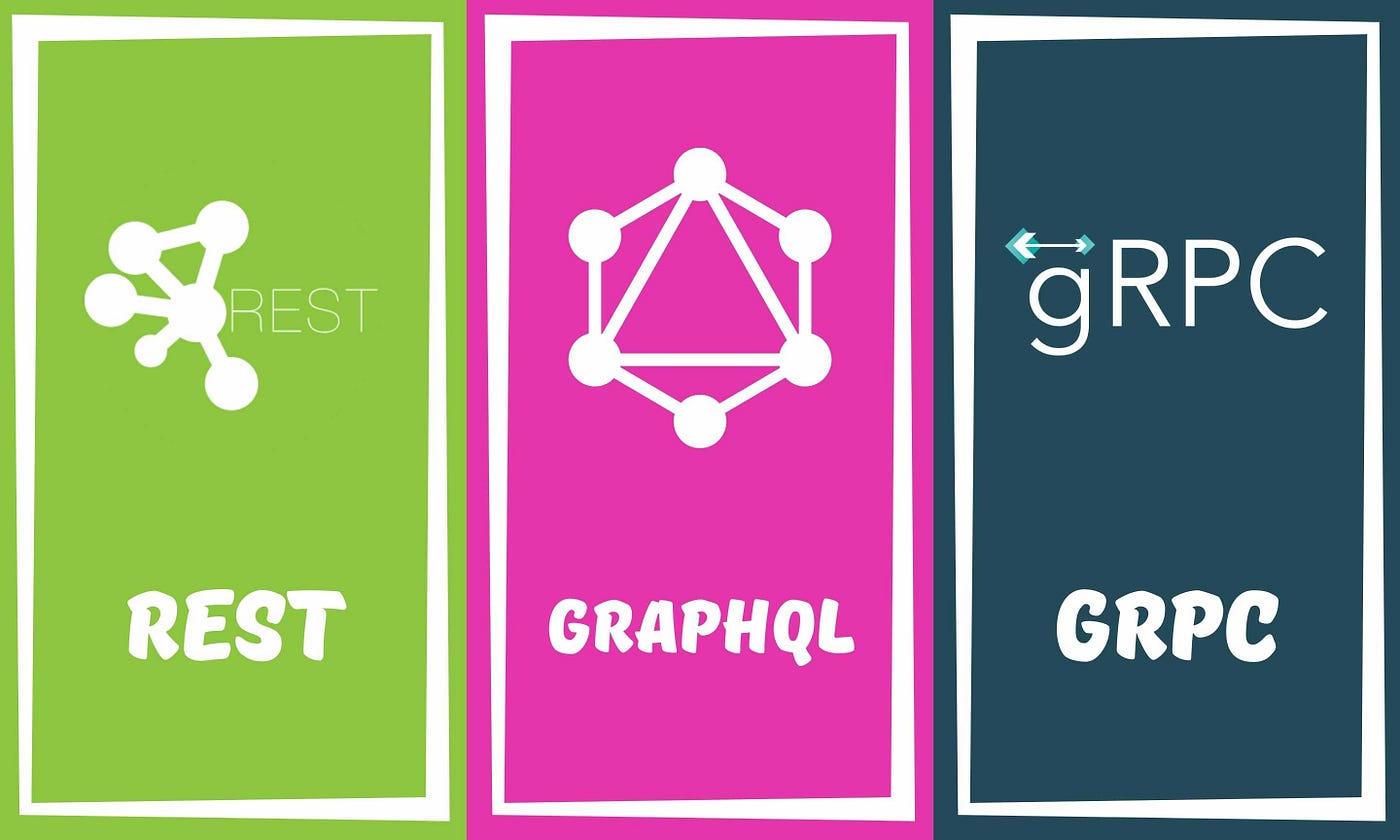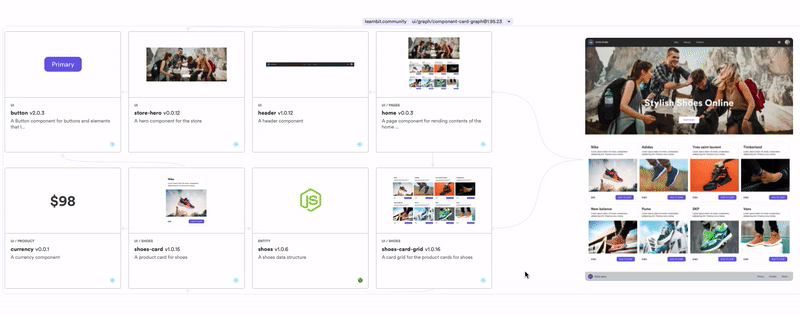

REST vs GraphQL vs gRPC
source link: https://blog.bitsrc.io/rest-vs-graphql-vs-grpc-684edfacf810
Go to the source link to view the article. You can view the picture content, updated content and better typesetting reading experience. If the link is broken, please click the button below to view the snapshot at that time.
REST vs GraphQL vs gRPC
In-depth comparison of the 3 most popular API development technologies

REST, GraphQL, and gRPC are the 3 most popular API development technologies in modern web applications. However, choosing one isn’t easy since they all have unique features.
In this article, I will compare and contrast the features and usages of REST, GraphQL, and gRPC to help you decide the best one for your project.
REST — The Most Popular Technology
Representational State Transfer (REST) is the most popular API development technology in modern web development. It provides a stateless architecture for data transferring. Client requests contain all the required details to fulfill the request, and the server does not keep the client’s state.
REST APIs support native HTTP caching headers and use HTTP methods (POST, GET, PUT, PATCH, and DELETE) to manipulate data. Anyone can get started with REST easily since it is simple and has a shallow learning curve.
Also, REST is easily scalable and reliable. Therefore, developers can choose it for their applications without any doubt. Even companies like Twitter, Paypal, and Google use REST APIs in their products.
Benefits of REST
- You can assuredly implement CRUD operations using standard HTTP methods.
- REST has been there for a long period, and almost every developer knows how to use it.
- It supports caching.
- It is scalable and provides separation between the client and the server.
- You can integrate it into multiple applications with ease.
Drawbacks of REST
- It has over-fetching and under-fetching issues.
- It can’t maintain states.
- It has large payload sizes.
- The number of endpoints drastically increases as the application scales.
- It isn’t easy to update database schema or data structures.
When to Choose REST
REST is the best choice if you do not have any specific requirements. For example, if you are new to development, using REST is the perfect match since it has a shallow learning curve. In addition, it has a large ecosystem, and you can easily find solutions to any problem you face.
Also, you would better use REST when dealing with many requests and limited bandwidth. You can use its caching support to improve performance in such situations.
Overall, we can not limit the use of REST to certain types of applications. For example, you can use REST if your application explicitly requires GraphQL or gRPC.
GraphQL- A Client-Driven Standard
GraphQL is a data query language introduced in 2015. It allows developers to pinpoint and fetch the exact data they need. Compared to REST, GraphQL is a client-driven approach where the client can decide what data is needed, how to fetch data and the format. It also resolves the over-fetching and under-fetching issues since the client can pinpoint the required data.
GraphQL manipulates the data using queries, mutations, and subscriptions.
- Queries — To request data from the server.
- Mutations — To modify server-side data.
- Subscriptions — To get live updates when data gets updated.
GitHub is one of the biggest companies that use GraphQL. It switched to GraphQL from REST in 2016, and it significantly helped GitHub in its rapid growth.
Benefits of GraphQL
- It is highly flexible and delivers precisely what the client needs.
- It has no over-fetching and under-fetching.
- It is supported by well-known languages, including JavaScript, Java, Python, Ruby, and PHP.
- It allows customizing the structure of the data.
- A single query can contain fields from multiple resources.
Drawbacks of GraphQL
- Queries can be complex.
- It lacks built-in caching support.
- Learning GraphQL can be challenging compared to REST.
- It does not support file upload by default.
When to Choose GraphQL
GraphQL is an excellent choice for querying databases with many records. You can eliminate the over-fetching with GraphQL and only retrieve the necessary data in specific formats to increase the application performance. Also, GraphQL is well suited for situations where you need to aggregate data from multiple resources.
You can also useGraphQL when you do not entirely understand how the client uses the API. With GraphQL, you do not need to define a strict contract upfront. Instead, you can gradually build up the API based on client feedback.
gRPC — A Performance-Oriented Technology
gRPC is an evolved version of remote procedure calls introduced by Google in 2016. It is a lightweight solution and provides maximum performance using minimum resources.
gRPC follows a contract-based approach to communication. It requires both client and the server to have contracts before starting the communication. gRPC uses Protobuf(a declarative language) for contract creation, and it generates compatible codes for both client and the server using a selected language.
There are 4 communication methods supported by gRPC:
- Unary — First, the client makes a single request to the server. Then, the server sends a single response.
- Client-Streaming — First, the client streams a series of requests to the server, followed by a message to inform that the stream is over. Finally, the server sends a single reply.
- Server-Streaming — First, the client makes a single request to the server. Then, the server sends a stream of messages to the client.
- Bidirectional Streaming — Both client and the server can send messages at any time after establishing the initial connection.
Benefits of gRPC
- It is open source. So developers can modify it as needed.
- It supports multiple languages, including JavaScript, Java, C, C++, C#, Kotlin, Python, Go, and PHP.
- It is capable of load balancing.
- It uses HTTP2 by default to reduce the latency compared to REST APIs.
- It serializes data in binary format.
- It supports full-duplex streaming.
Drawbacks of gRPC
- It doesn’t come with browser support by default.
- It doesn’t have firm community support compared to REST and GraphQL.
When to Choose gRPC
gRPC is an excellent option for communication between devices with low resources. For example, IoT devices, smart devices, and cameras can benefit from using gRPC since it optimizes the performance using minimum resources.
In addition to that, gRPC can be used in microservices architecture to handle communications between services since it can communicate with services written in different languages.
Conclusion
I have discussed in this article the 3 most popular API development technologies, their benefits, drawbacks, and when we should choose them. I hope you have now better-understood REST, GraphQL, and gRPC to choose the best one for your application.
However, it’s important to note that we can’t put one over another and say this is superior to the other. Each has unique features, and you should select one based on your project requirements.
I hope you have found this article helpful. Thank you for reading!
Build Component-Driven Apps: Faster, Scalable, Fun
Imagine every useful code you write is a component you can use in new projects, and even share across applications or with your teammates.
Bit is a powerful OSS workspace for building and composing components. The component cloud is how teams can share and collaborate on components.
Together they help over 250,000 developers and teams to:
- Build modular software; Faster to build and easier to work on.
- Write components once and (re)use them everywhere. Quickly customize components to fit new projects.
- Share components, collaborate, get updates, and stay in sync.
- Radically improve development speed, consistency, and scale.
- Make things like design systems and micro-frontends easy.
Recommend
About Joyk
Aggregate valuable and interesting links.
Joyk means Joy of geeK
